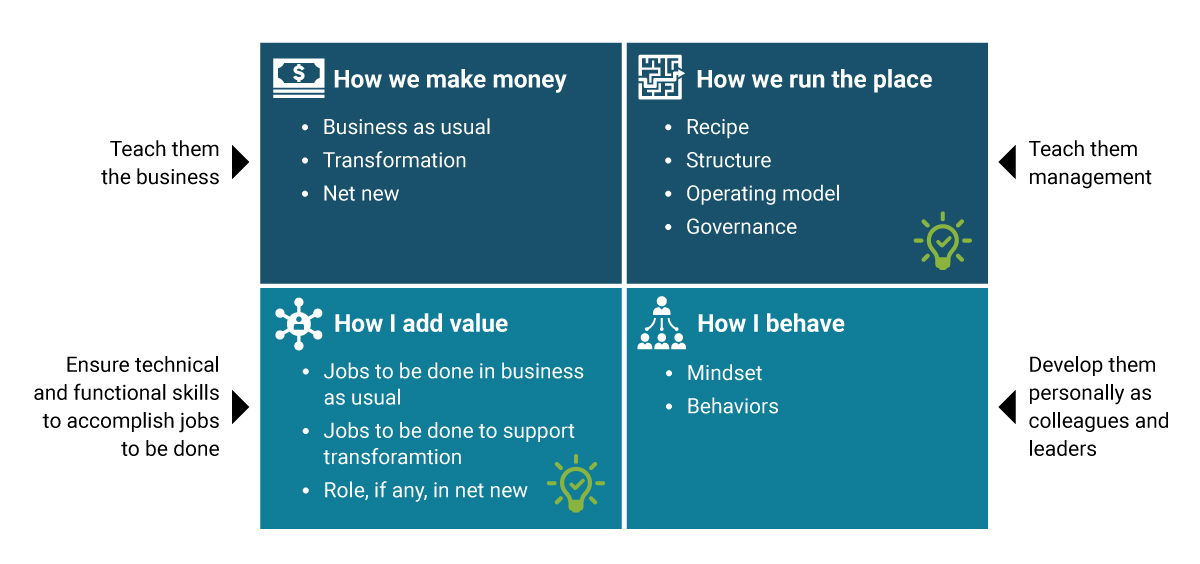As we near the end of the first quarter, you can start to smell the fear sinking in. Audacious goals and revenue targets have been set, but only two months into the year there are some cracks showing that the goals may not be as achievable as originally planned.
Enter the BLAME GAME
As different team members and entire departments rely on the partnership and participation of people outside of their influence and control, it becomes natural to start pointing fingers in those outer directions when internal efforts aren’t making their intended mark. As senior leaders start asking you and your team members to report on progress year to date, you can avoid falling into the blame game trap by building fundamentals in two key areas.
Our point of inspiration for avoiding the blame game comes from a recent article from McKinsey & Company. The authors provide a four-quadrant grid to assess and build team capabilities and then offer advice of what to do in each quadrant.
Source: McKinsey & Company / McKinsey Organization Practice
Where we see the best opportunities for leaders to avoid a blame game trap is to have rock solid plans in place for two of the quadrants:
- Teaching Management
- Ensuring You Have the Technical and Functional Skills Needed
For Teaching Management, the premise is that you have to have the organizational structure in place to meet the goals for the year. This doesn’t mean a giant department reorganization. It just means you need to make sure that the team members that are working to support the goals have a clear understanding of how they personally fit into the goal, and what processes are needed to make sure that collaboration within the team and outside of the team is needed. In some cases as a leader, you may need to step in and influence other teams and departments to make sure your team members are getting the inputs and collaboration necessary.
For Functional Skills, you need to take an honest look at the skills of the current team, the skills needed to meet or exceed the goals for the year and the gaps that may prevent you from being successful. For each gap, there is an important assessment of the following options:
- Additional training that will help your existing members boost their skills to meet the goals.
- Additional contract resources needed to fill the gaps in skill sets.
- Additional employees needed to fill the gaps in skill sets.
For each of the options, there is a cost involved, so carefully outline what those costs are, and how those costs will help meet or exceed the goals – this with help with any senior management approvals. And remember, in some cases, you may be forced to evaluate your current team and make a hard choice of eliminating or replacing a current employee that doesn’t have the skills needed for meeting goals (and doesn’t have the option to boost their skills with training).
In an ideal world, these steps would be figured out prior to the start of a new year, but the reality is that for most teams, new goals are set and dictated before the teams that support those goals have a chance to proactively determine the functional skills and training needed to meet the goals.
Now is the perfect time to look at your training and functional / technical skills gaps and get a plan in place. It will take the focus, for both you and your team members, on a positive course of what can be accomplished, instead of the easy / negative course of blaming others for shortcomings.
Contact Us Today
We make it easy to jump start success. Simply contact us and share your current team challenge or need, and we’ll respond with program ideas to innovate your team performance.


